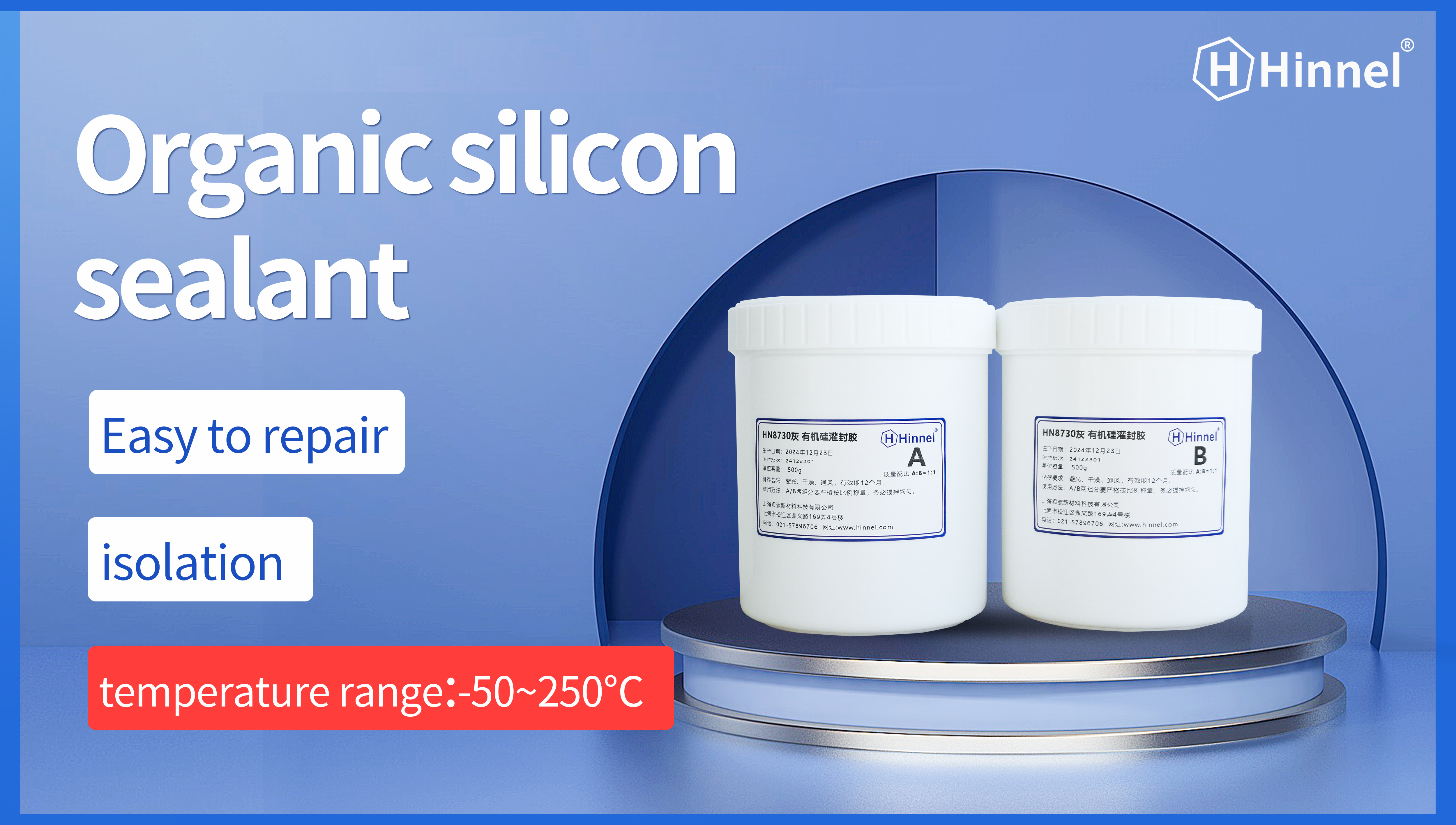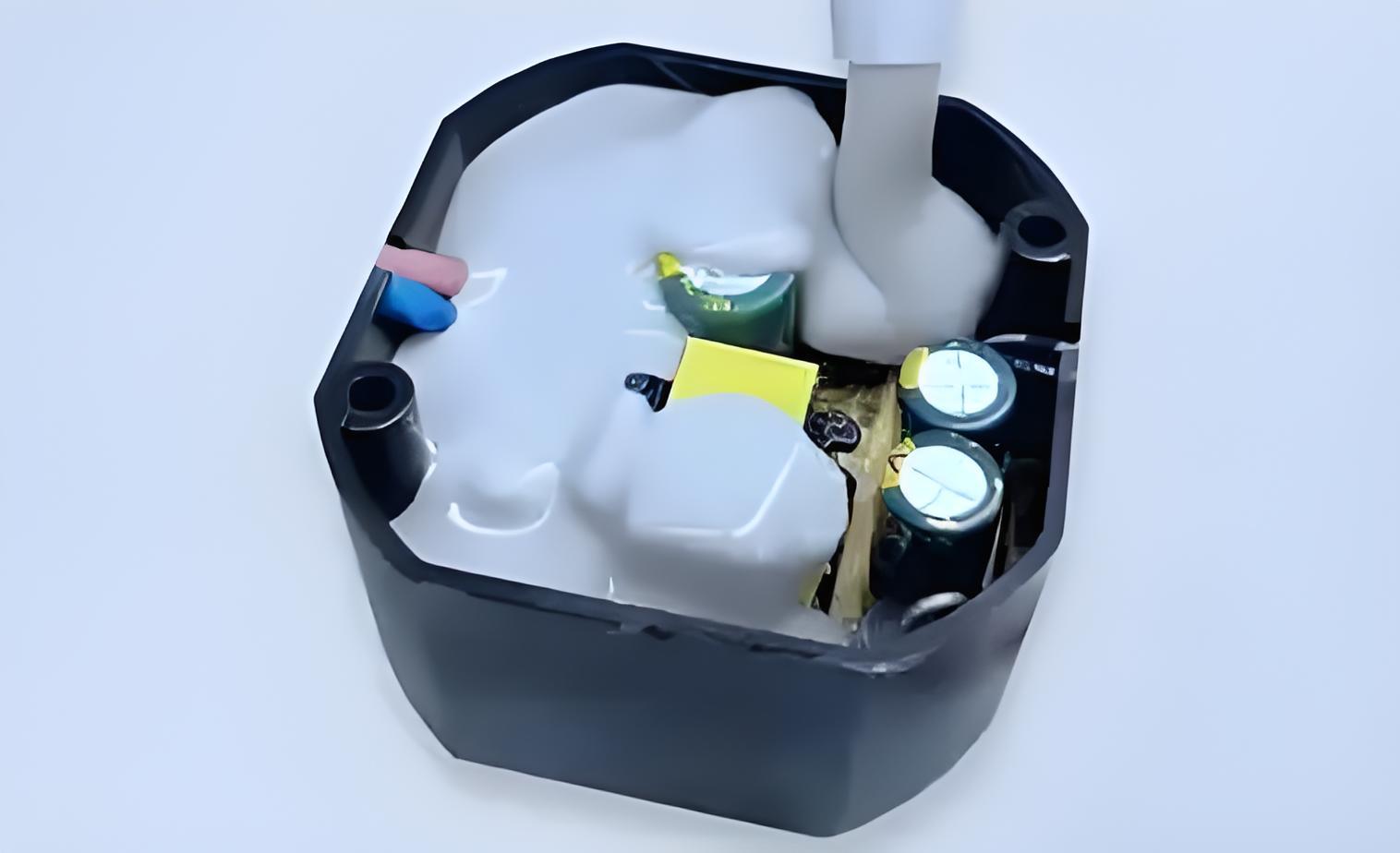What factors affect the thermal conductivity of silicone potting compounds?
Organosilicon is a polymer material with a silicon-oxygen bond as its main chain. Due to its excellent high and low temperature resistance, electrical insulation, weather resistance, and chemical corrosion resistance, as well as its excellent processing and molding properties, it has become an important basic material in the electronics industry. So, what are the key factors affecting the thermal conductivity of potting glue? Shanghai Hinnel New Materials Technology Co., Ltd. will introduce them to you.
Shanghai Hinnel
2025/06/17

Key factors affecting the thermal conductivity of potting glue are as follows:
1. Material Composition: The thermal conductivity of potting silicone is closely related to its raw material composition. By adjusting the silicone formula, such as adding thermally conductive fillers or changing the filler ratio, the thermal conductivity can be effectively improved. In addition, the crosslinking density and molecular chain structure of the silicone will also affect its thermal conductivity.
2. Preparation Process: The preparation process of potting silicone has a significant impact on its thermal conductivity. For example, the temperature and pressure control during the molding process, as well as post-processing steps such as heat treatment, will significantly affect the thermal conductivity of the silicone.
3. Filling Density: Filling thermally conductive fillers in potting silicone is an effective way to improve thermal conductivity. The higher the filling density, the higher the thermal conductivity is usually. However, excessively high filling density may lead to a decrease in the mechanical properties of the silicone, so a balance needs to be found between thermal conductivity and mechanical properties.
Silicone thermally conductive potting glue Applications
Silicone potting glue has excellent sealing and thermally conductive flame-retardant properties, and can seal and protect electronic components from external moisture, pollution, etc. This is mainly reflected in: thermal potting of power supplies, controllers, and high-power heating devices; insulation and waterproof potting of sensors and small electrical appliances; sealing, heat dissipation, and noise reduction of coils; shock protection of precision electronic components; waterproof potting of lamps and junction boxes; thermal potting of lithium battery packs and new energy vehicle electronic controls.

Common Problems (QA) of Silicone Potting Glue
1. Adhesive is not easy to cure
This may be due to insufficient amount of curing agent, or the A agent has been stored for too long without thorough mixing.
2. Shrinkage Cracking
Shrinkage cracking may be caused by excessive internal stress generated during curing, high thermal expansion coefficient of the product itself, or improper construction. Low shrinkage agents can be added to the product formula to reduce internal stress during curing; control the construction environment and operation methods, and appropriately adjust the product formula to reduce thermal expansion.
3. Silicone Potting Glue Poisoning and Non-Curing
Silicone poisoning generally occurs in addition-type electronic potting glues. After poisoning, the silicone will not cure. Therefore, when using addition-type potting glue, contact with organic compounds containing phosphorus, sulfur, and nitrogen should be avoided, or polyurethane, epoxy resin, unsaturated polyester, condensation-type room temperature vulcanized silicone rubber, etc. should not be used simultaneously with addition-type silicone to prevent poisoning and non-curing.
The above is a summary by Hinnel New Materials Silicone Potting Glue For more information about silicone potting glue, please leave a message!
Note: Some images are from the Internet. Please contact us for deletion if there is any infringement.
> Recommend reading
Why is epoxy structural adhesive used for bonding the bottom of the inductor?
Shanghai Hinnel
2025/07/29










